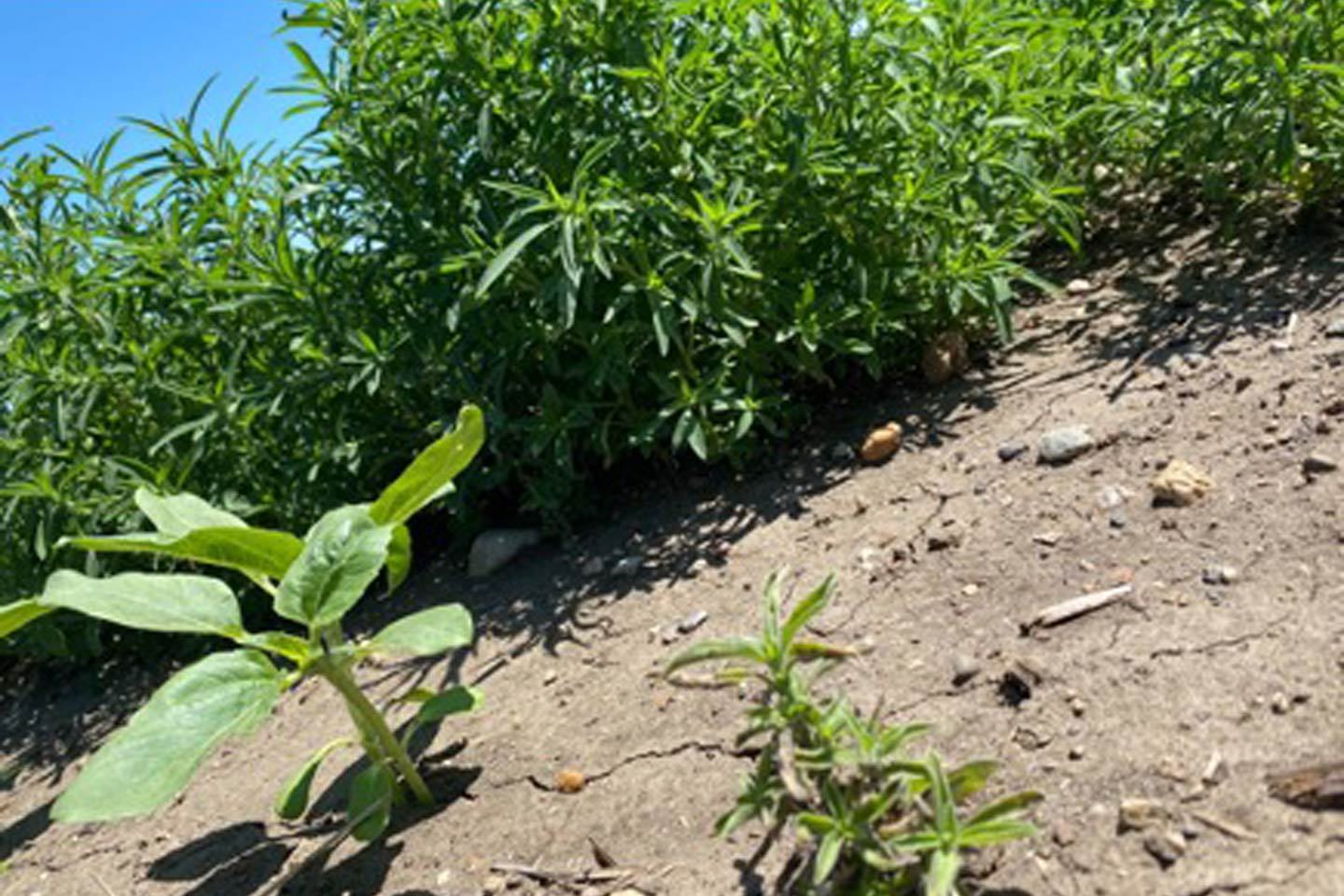When deciphering all the herbicide options, there's one characteristic a weed control program should be built on: residual.
Growers fight germinating weeds from April to October. Having a residual herbicide in the sprayer at the preemergent and postemergent stages can help address this wide germination window. They give growers a constant control force in the field to target weeds before or while they germinate.
“In today’s world with waterhemp and Palmer amaranth, it truly requires a systematic approach. Growers have to start clean with a good burndown including a long residual and, from the standpoint of post, they need to overlay another residual to stop weeds from emerging,” says Aaron Drake, business development lead for Sunrise Cooperative. “This system is contingent on keeping those herbicide active ingredients available and activated earlier and later in the season.”
Drake also points out that, with a residual herbicide during the preemergent stage, it can buy a grower time and reduce the chances of fighting bigger weeds later in the season.
“To ask glyphosate, Liberty® herbicide or dicamba to take down big weeds without an existing residual in the field sets those chemistries up for failure. What we end up with is burn back and then, ultimately, the weeds will just return,” Drake says.
MAKING THE RESIDUAL LIFE LAST ITS LONGEST
Utilizing herbicides with a long-lasting residual is a best practice, but ensuring those herbicides are effective all the way through to canopy closure is just as important.
In order for a grower to maximize their herbicides’ effective residual life, several factors with significant influence on residual must be accounted for. According to Drake Copeland, technical service manager for FMC, these components can make or break a weed control program.
Soil Degradation
Herbicides naturally degrade in the soil but that pace varies. Soil type plays a big role in how long a herbicide persists effectively in the soil. For example, soil that is porous and prone to leaching following a rain event lessens a herbicide’s staying power. Examining and knowing each field’s type allows a grower to pinpoint herbicide options tailored for their different soil types.
Adequate Rates
Use rate has a significant effect on whether or not a herbicide’s residual is maximized. Combining different herbicides or spiking the sprayer tank with other products are easy ways operators can alter a herbicide’s use rate in the tank.
To ask glyphosate, Liberty® herbicide or dicamba to take down big weeds without an existing residual in the field sets those chemistries up for failure. What we end up with is burn back and then, ultimately, the weeds will just return.”
WEIGHING POWERHOUSE OPTIONS
When Copeland works with a grower to build out a herbicide program, he’s not only looking for residuals but options. It’s a position he says FMC delivers on.
“What the FMC toolbox offers growers is choice. With the lineup of Authority® brand herbicides, growers have the opportunity to incorporate, from a preemergence standpoint, multiple modes of action to tackle specific in-field challenges and needs they have,” Copeland says. “When it comes to making that postemergence decision, an option like Anthem® MAXX herbicide gives a grower the ability to add another mode of action to the tank. Doing this enhances their overall control and helps them control weeds like Palmer amaranth and waterhemp.”
Authority Supreme and Edge herbicides offer growers an optimized ratio of the industry’s best Group 14 and Group 15 herbicides, sulfentrazone and pyroxasulfone.
These solutions are built for growers with wide-ranging soil and field conditions from light soils to heavy, high organic matter soils, all while delivering residual weed control against weed species like Palmer amaranth and waterhemp, that other chemistries struggle to manage.
“At the end of the day, it’s about creating a weed management program built on a backbone of multiple different, effective chemistries and putting them out together. By doing this, we end up delivering a multifaceted approach that drives residual activity,” Copeland says. “It’s our goal with residual activity in both PRE and POST that we don’t give weeds a chance to germinate.”
Always read and follow all label directions, precautions and restrictions for use. Some products may not be registered for sale or use in all states. FMC, the FMC logo, Anthem and Authority are trademarks of FMC Corporation or an affiliate. Liberty is a trademark of BASF. ©2022 FMC Corporation. All rights reserved. 22-FMC-3222 01/22



